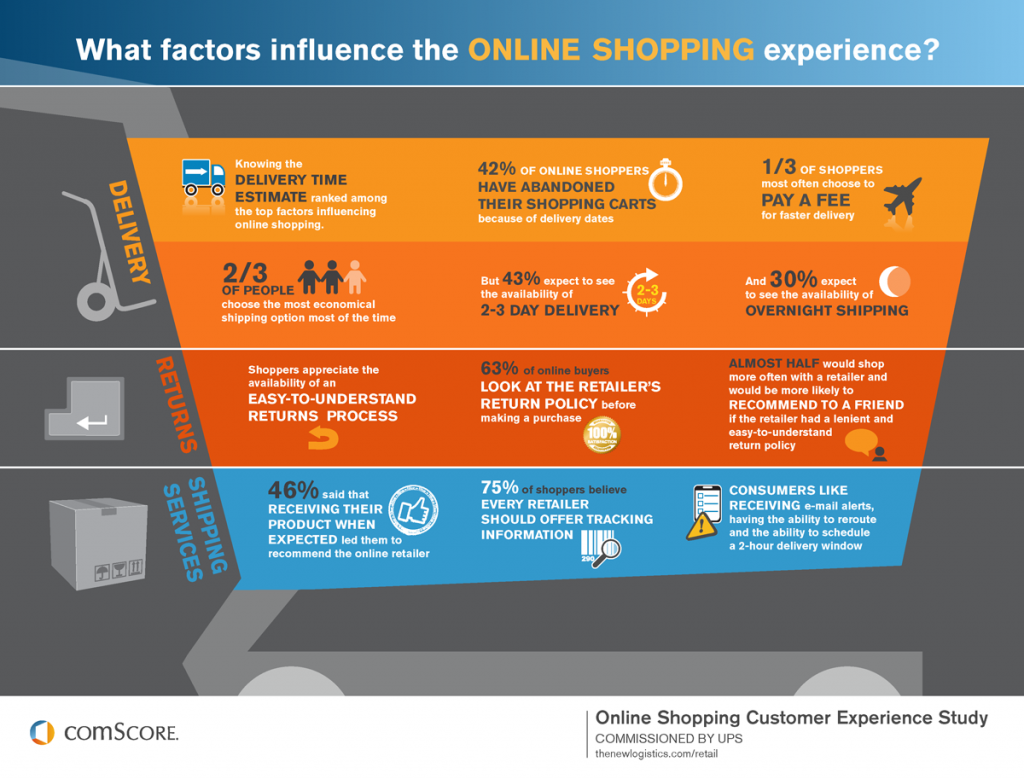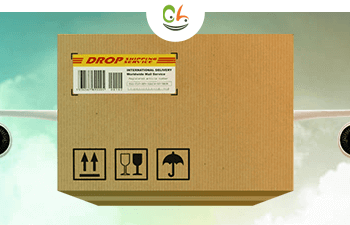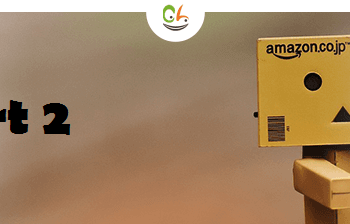We probably went through most of the possible eBay fails while building a dropshipping business on eBay – from blindly trusting anonymous suppliers to not keeping track of our accounting.
In this post, I’m going to focus on the deadliest dropshipping mistakes we made. These are the mistakes that nearly killed our eBay business.
Dropshipping mistake #3: Selling for a loss or low margin
This one is not necessarily unique to dropshipping, but it’s more common for businesses that use the dropshipping model.
The reason is that dropshipping usually generates lower profit margins per transaction – the product goes through multiple hands until it reaches the end consumer, which means that less profit is left for the merchant.
Running a dropshipping business at scale involves keeping track of lots of moving parts:
- Product prices
- Shipping prices
- Stock availability
- Tracking info
- Customer service statuses
- Emergency situations (like losing $20,000 worth of goods in the post)
- Percentage of fraud
- And more.
At some point, we were running under the assumption that “our gross profit margin is around 7%” – we didn’t bother to check each and every transaction for profitability, it seemed like a distraction.
When we finally implemented a system to track our profit (check out our post about eBay profit calculator to discover your real profit on eBay), we were shocked to discover that we were actually losing between $0.5-$10 on many of our transactions!
My point here is that a dropshipping business is usually a low profit margin one. To be successful, you typically can’t compete on price over time.
Now let’s talk about what can you do!

compete on price – dropshipping mistakes
How do we avoid the “low margin” dropshipping mistakes
Realizing that we needed higher margins to be profitable, we decided to focus on products priced above $100. The idea is that it requires the same amount of effort and attention to process a $15 dropship order as a $150 one, but the profit margin for a $150 transaction is naturally higher.
I highly recommend reading the post I dedicated to the process we used to find products suitable for dropshipping – How to Find The Best things to Sell On eBay.
We understood that we couldn’t continue competing on price, as even if we managed to find a profitable line of products – profit margins always go down with time, as more and more competition joins the party. That’s why we focused on a new competitive advantage – customer satisfaction. We went out of our way to make sure every customer was left with a WOW experience with us, thus increasing our chances to earn their return business.
Apparently our hunch was right –
According to a study by McKinsey – “Ecommerce spending for new customers is on average $24.50, compared to $52.50 for repeat customers.”
There is also an added value to not competing for the lowest prices – from my experience “dollar driven” customers are usually much less pleasant to deal with than those who look for great service /selection /professional advice etc.
Find your competitive advantage
There are several competitive advantages you can choose from and the important thing is to choose ONE to focus all of your dropshipping business on.
I previously wrote –
Most new sellers claim “If I don’t have the lowest price, I don’t stand a chance to make a sale on eBay”.
This is a critical mistake. Do you ALWAYS buy everything at the cheapest price? Of course not!
There are more than 155 million buyers on eBay, not everybody is 100% dollar driven!Some are looking for the fastest shipper – they need their item asap!
Others carefully read through the feedback to make sure they are buying from a fair, reputable business that will take care of them if anything goes wrong with the transaction or product.Unless you are huge, and I mean Walmart / Amazon / Best buy huge – Price is a very bad competitive advantage, it gets very hard to sustain over time (unless you’re the manufacturer).
There is a lot of noise in the world – if you want people to hear and remember you, be laser focused with your message and competitive advantage, I wrote about the importance of focus here.
Think hard about it and pick one and only competitive advantage. For us, it was customer support – We preferred to lose money in order to make the customers happy. In the long run, it helped us build a profitable and successful eBay business.
I can’t agree more with Andrew Youderian when he says: “Pick a Niche Where You Can Add Value” in his great post – Anatomy of a Great Niche.
“… So here’s the point to the story: By really understanding the problems their customers face — and by providing great resources to help solve these problems — Crutchfield is able to charge a premium. They’re currently selling a receiver for $494 that’s listed on Amazon for $405 — a $90 difference! Despite charging $90 more than Amazon, they’ll still be able to sell tons of these receivers.”
Key Takeaway: don’t compete over price in the long term, find your one competitive advantage and nurture it to stand out.
Try CrazyLister for free! Easily create professional, mobile-optimized eBay listings
Dropshipping mistake #2: Supplier running out of stock
The problem here is pretty obvious – a customer pays you for an item your supplier doesn’t have in stock. What do you do?
The worst solution is to cancel the order and lose the customer – You don’t just lose the specific transaction, you also lose a chance for a repeat business, a potential ambassador for your brand and a portion of your reputation, not to mention the highly possible negative feedback on eBay from a pissed off ex-customer.
Moreover, customers don’t care how we fulfill an order, they bought an item and they want to get it asap. The problems we have with our suppliers are irrelevant in this situation and I can’t blame the customer for being unhappy.
If you run a well organized dropshipping business you are not supposed to be in such situations because you will know which items are in stock and which aren’t so you can adjust your listings to reflect the current stock situation.
How do we avoid the “out of stock” dropshipping mistakes
We learned early on how much we actually lose by saying “sorry, we’re out of stock” to a customer, and so we made a strategic decision to source multiple suppliers for the same or at least similar products.
If supplier A went out of stock, we would dropship from supplier B even if he had higher prices. In case we had no way to source the exact item from a different supplier, we would offer an upgraded product, even if it meant making no profit or losing a few bucks on the specific transaction. In the long run, this strategy proved itself with a growing base of returning customers.
In a seldom worst case scenario, we would order the product from another eBay /amazon seller – usually making no profit, but still keeping our customer happy!
Key takeaway: Work with multiple suppliers for the same product to minimize short selling.
Dropshipping mistake #1: Not meeting dropshipping suppliers in person
For years we would not leave our comfort zone – a small office in downtown Haifa, Israel at the time.
We would talk to 10’s of suppliers and move tons of inventory around the globe, without ever meeting anybody in person.
Then one day, we heard about a highly relevant exhibition taking place in Amsterdam, so we decided to leave our comfort zone and meet our suppliers in person!

dropshipping suppliers
I can draw a clear line in the development of our dropshipping business – BM and AM, Before Meeting (our dropshipping suppliers) and After Meeting.
Let me be clear – we would have never been able to build a successful dropshipping business without meeting our suppliers in person.
How do we avoid the “Not meeting the suppliers” dropshipping mistakes
Well, hmm… we met our dropshipping suppliers! 🙂
You can read about the experience here – How We Sourced Awesome, Reliable Suppliers for Our eBay Business.
We took our suppliers to dinner and built real human relations, needless to say that from that moment onward, we received much more attention and better terms, both of which played a major role in growing our dropshipping business:
- Suppliers trusted us more and allowed us to pay net + 30 (paying 30 days after the actual order is placed).
- We were able to better communicate and resolve issues together as partners, versus as anonymous parties before.
Yes, flying to meet your suppliers will cost anywhere between $500 to $5000, but it’s probably one of the best ROI (returns on investment) we ever got!
A word on communicating delivery time estimate
Anybody who ever sold anything online knows that shipping time is among the critical factors for a customer.
Delivery time estimate ranked among the top factors influencing online shopping –

delivery time estimate is crucial to online shoppers
From our experience as long as you set the shipping time-frame expectations right and communicate the advance of the package to the customer, he will be happy!
A good solution we came across is AfterShip, a free app for eBay sellers.
- Auto track all shipments in one place – UPS, USPS, Fedex & +350 couriers (Free)
- Notify customers when in transit, out for delivery, delivered or exceptions (Paid)
- Find out if shipments are delivered on time, and reduce inquiries about order status.
Conclusion
Learn from our dropshipping mistakes:
- Stop scraping dropshipping orders for $1-2 profit, with the same amount of effort you can do $10, $20, $50 per transaction – invest in finding your niche (learn how to find a niche).
- Avoid leaving a customer empty handed at all costs, make sure you never depend solely on one dropshipping supplier, be able to offer identical or better version of the product from other suppliers.
- Don’t be lazy! If your’e serious about your dropshipping business – leave the comfort of your PC chair and meet people in the real world!






